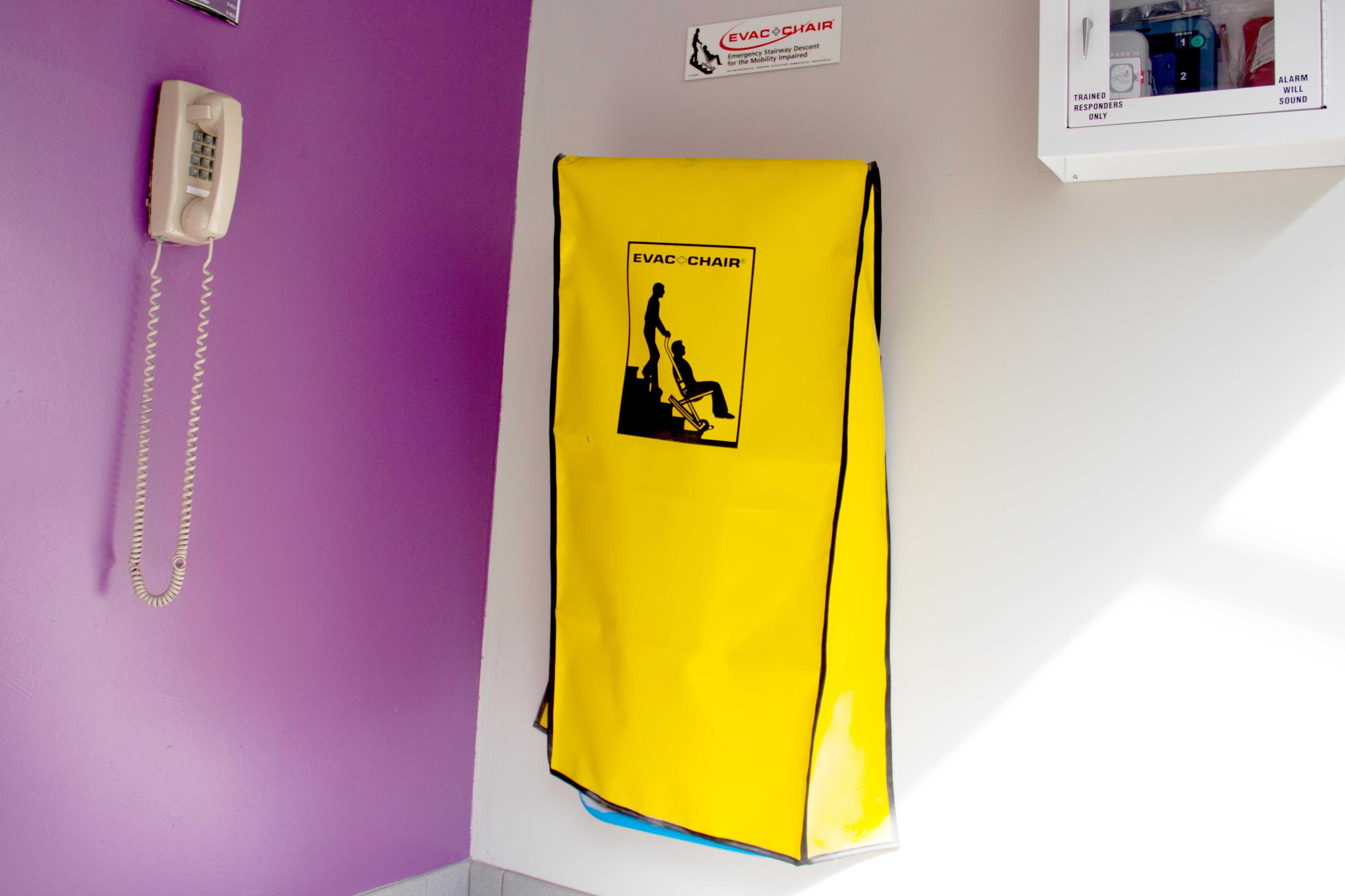Elevators at Cal State Long Beach have signs adjacent to them that say, “In case of fire, do not use elevator. Use stairs.” This is usually a simple step to follow when evacuating a building, unless you’re in a wheelchair.
In response to this concern, Associated Students Inc. passed a resolution last Wednesday that pushed for funding of Evac-Chairs in all multi-level structures on campus.
An Evac-Chair is an ergonomically designed, lightweight variation of a wheelchair that can be used to transport an incapacitated person from an upper level to the ground floor of a building in case of an emergency. Similar to a gurney, the incapacitated person would be strapped to the chair as another person maneuvers it down the stairs, according to Christopher Vickery, ASI secretary of disability affairs.
“Certainly, the goals of the resolution are quite simple,” said Vickery.“[What we are] trying to do is have at least one Evac-Chair per floor above the first. So for example, the [Liberal Arts] building 5 would have two Evac-Chairs.”
According to David Sanfilippo, director of Disabled Student Services, the resolution asks the university to provide about $30,000 to cover the cost of purchasing and installing evacuation chairs in about 13 more floors in various buildings on campus.
“A regular wheelchair can weigh about 1,000 pounds with a person inside it,” Sanfilippo said. “And that’s not something somebody can carry down the stairs very easily.”
Vickery said evacuating a disabled person would usually lie in the hands of those who would voluntarily help.
“Three years ago, there was an earthquake drill on campus and a disabled student who wasn’t able to get out of the building was counted amongst the dead or injured,” Vickery said. “If an emergency happens right now, [the physically disabled] would have to wait for a good Samaritan to carry them down the stairs, or like what a student told me, they’re just s–t out of luck.”
However, Sanfilippo said, every building at CSULB has an evacuation plan for people with disabilities, but the response to each emergency is unique.
“We look at what the situation dictates and it’s not always going to fit in a little box when there’s either a fire or an earthquake,” Sanfilippo said. “So [the Evac-Chairs] really serve a great purpose for our students, faculty and staff feeling a lot more comfortable.”
Vickery said that all the buildings on campus are in compliance with the Americans with Disabilities Act, but he believes the buildings are still not safe or efficient enough for disabled students to exit in case of an emergency, which is the reason for the resolution.
“The handicap buttons and these Evac-Chairs are not [for] ADA compliance,” Vickery said. “[They’re] more … of good will on behalf of the university and ASI.”
ASI-owned buildings such as the University Student Union and the Student Recreation and Wellness Center and new structures like the Molecular Science buildings on campus have already incorporated Evac-Chairs, Vickery said.
According to Vickery, the Evac-Chairs would not only benefit disabled students but would also benefit anyone who becomes immobilized during an emergency situation.
“What I am trying to bring about is making people understand that this is for disabled people, but it is also for TABs, which are Temporarily Able-Bodied individuals,” Vickery said. “[Anyone can become] disabled any minute when we step inside a car or climb a ladder.”
According to the CSULB website, Disabled Student Services assists more than 1,300 students on campus annually.
“We’ve known of disasters like 9/11 where people with disabilities were not fortunate enough to get out because they didn’t have what these chairs provide,” Sanfilippo said. “[That is] the opportunity to be rescued much more easily.”




